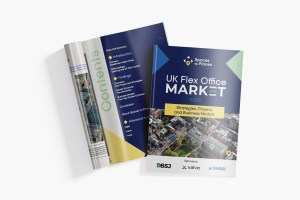Why a Systems Strategy is at the Core of Driving Profits and Services
Yardi’s Justin Harley joined a panel discussion at this year’s FlexSA Conference 2023, held in London, with Zoe Ellis-Moore from Space to Places, Jonny Rosenblatt from Spacemade and Chris Boultwood from Workspace who moderated the conversion regarding why a system strategy is at the core of driving profits and services within coworking and flexible workspaces.
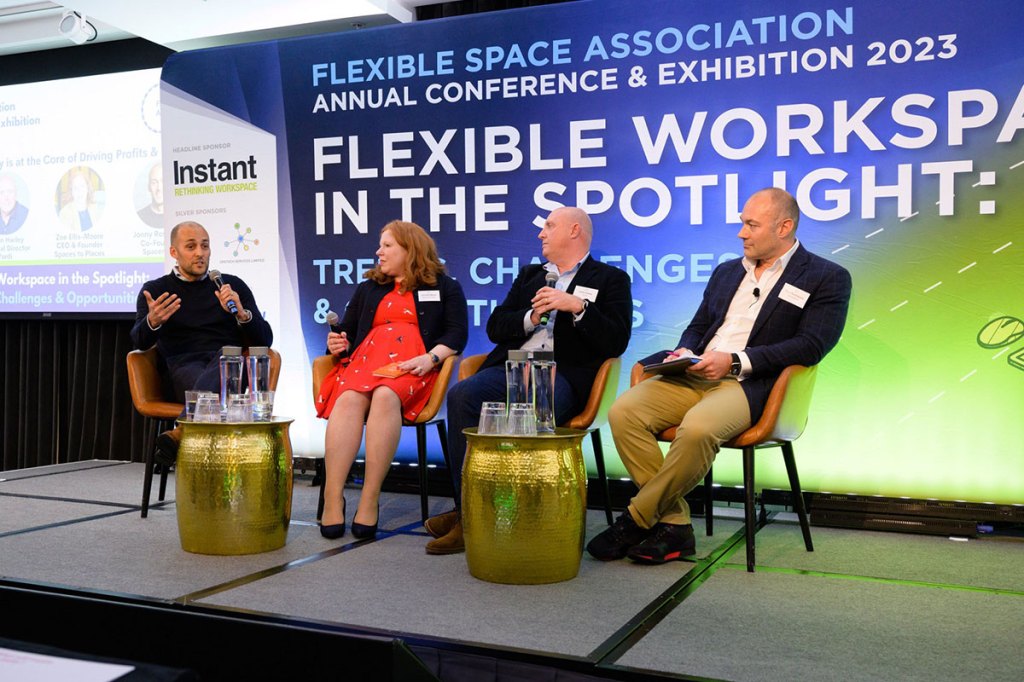
Technology Strategy: Aligning Technology with Business Goals
In today’s rapidly evolving business landscape, where the flex sector is booming, the integration of a system strategy becomes paramount to drive profits and deliver exceptional services within coworking and flexible workspaces. Boultwood opened the conversation by asking the panel to discuss technology strategies and what are the challenges found there.
Rosenblatt responded by highlighting that for flex providers like Spacemade, the focus is on three key elements, “hospitality, building a network of spaces and transparency,” which requires effective utilisation of technology. By leveraging technology and utilising a member app for access control to its offices, Spacemade enhanced engagement and communication with its members. Therefore, showcasing technology as an essential business tool rather than a “gimmick”.
“Hospitality is about engagement, it’s the way in which we interact with our members and the touchpoints in how they interact with us. We identified early on that you want to have as much technological connection with your members as possible. The way we’ve done this is with an app – which I’m sure most operators have – but within our business, you can only access our buildings by using the app.”
This technology-driven approach facilitated efficient member interaction, fostered communication between tenants and “built a network of spaces that is usable for members,” stated Rosenblatt. Embracing technology as an integral part of the business strategy enhances the overall member experience and strengthens the relationship between the workspace provider and its clients.
Rosenblatt also noted that the key to expanding and meeting goals is to have a “robust technology infrastructure.” This will not only ensure that members can “experience frictionless processes” but will also create a superior user experience for landlords. The integration of “connected systems,” which “pulls all the data from various sources into one dashboard” helps to build a network between spaces and will allow businesses to access “real-time data.” Therefore, enhancing transparency and “growth” within a company’s system strategy for coworking and flexible workspaces.
Technology as a Competitive Edge
Following Rosenblatt’s response, Ellis-Moore continued the discussion by highlighting how “technology can also be used as a competitive edge” for businesses. In the flexible workspace sector, technology can serve as a powerful differentiator, it can create a “point of difference,” stated Ellis-Moore. Flex providers can leverage technology to “offer low-cost, fully automated solutions,” such as “remote security monitoring” and “remote tours.” With these offerings, businesses can enhance operational efficiency while providing competitive prices. Ellis-Moore further noted that while this approach may be quite different from the traditional “high-end, five-star service model” it also allows businesses to tap into alternative market segments and cater towards diverse customer preferences and requirements.
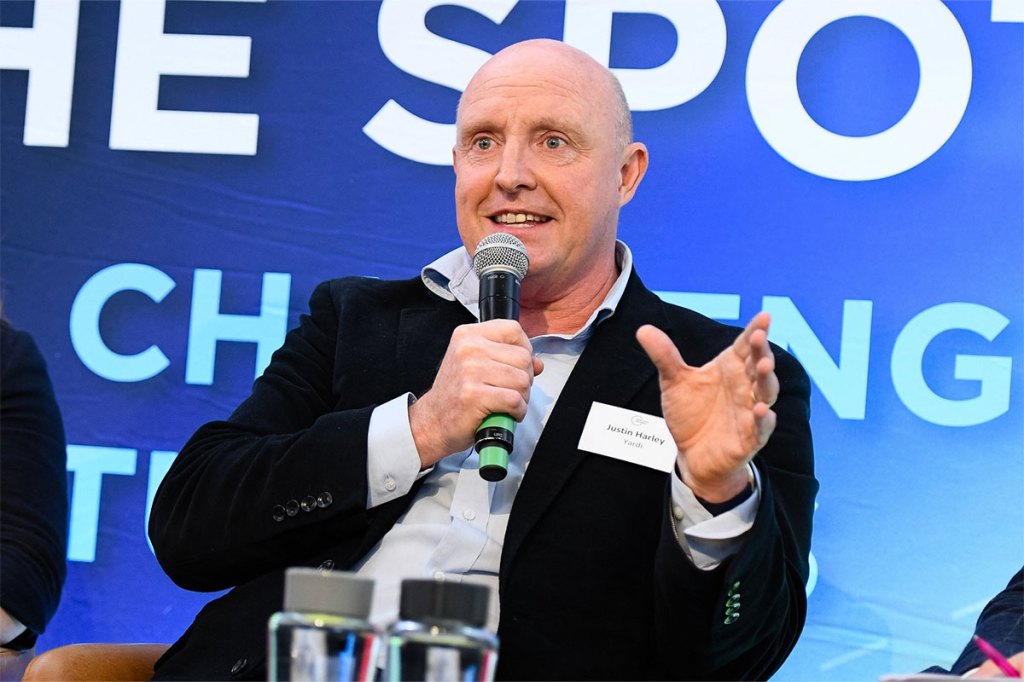
Harley ended the first half of the discussion by highlighting how “tech is not a tech strategy, it is part of your business strategy.” He states how technology is “fundamental for the tech strategy to be wrapped up in everything a business does.” Harley expands on this by stating that, “In your boardroom, you need people that understand it, someone who understands how tech is going to fit into the business strategy and make a real difference,” – “whether that is a point of differentiation,” as Ellis-Moore discussed, or “improving operational efficiency,” as Rosenblatt debated. The work and the strategy with “building the back office and having the right people such as data analysts or project managers,” that’s when a technology strategy becomes “extraordinary,” notes Harley.
Evaluating ROI: Automation and AI for Enhanced Efficiency
The second half of the discussion focused on key considerations businesses should have when evaluating ROI. Harley responded by urging the audience to “look to automate their routine and humans will manage the exceptions.” He went on to discuss that when evaluating the ROI for system implementations, businesses must focus on “automating routine tasks to free up human resources for more valuable activities.” He states that automation not only improves operational efficiencies but also “enhances the overall experience for both staff and customers.”
By leveraging technologies such as artificial intelligence (AI), businesses can optimise operations and allow AI algorithms to handle “routine tasks such as availability and pricing.” He further notes that this enables employees to focus on higher-value activities, therefore “leading to improved productivity and increased ROI.” Boultwood followed Harley’s point and agreed that “the best implementations support people’s day-to-day roles,” empowering employees to dedicate more time to strategic initiatives and member engagements within coworking and flex spaces.
Connecting People, Platforms & Processes
However, while the whole panel agreed that technology can increase operations, Ellis-Moore specified that before implementing new systems, businesses must ensure that their “core operations and processes are optimised first,” as Bill Gates once quoted – “Automation applied to inefficient operations will magnify inefficiencies.” She discussed that, “It’s easy to see technology as the solution that’s going to solve all the problems,” but without the core and the connection between “people, platforms and processes,” businesses will not be able to succeed. Therefore, Ellis-Moore states businesses must evaluate “their current technology stack and identify areas for improvement” before implementing new solutions if they wish to align their system strategy with their business strategy.
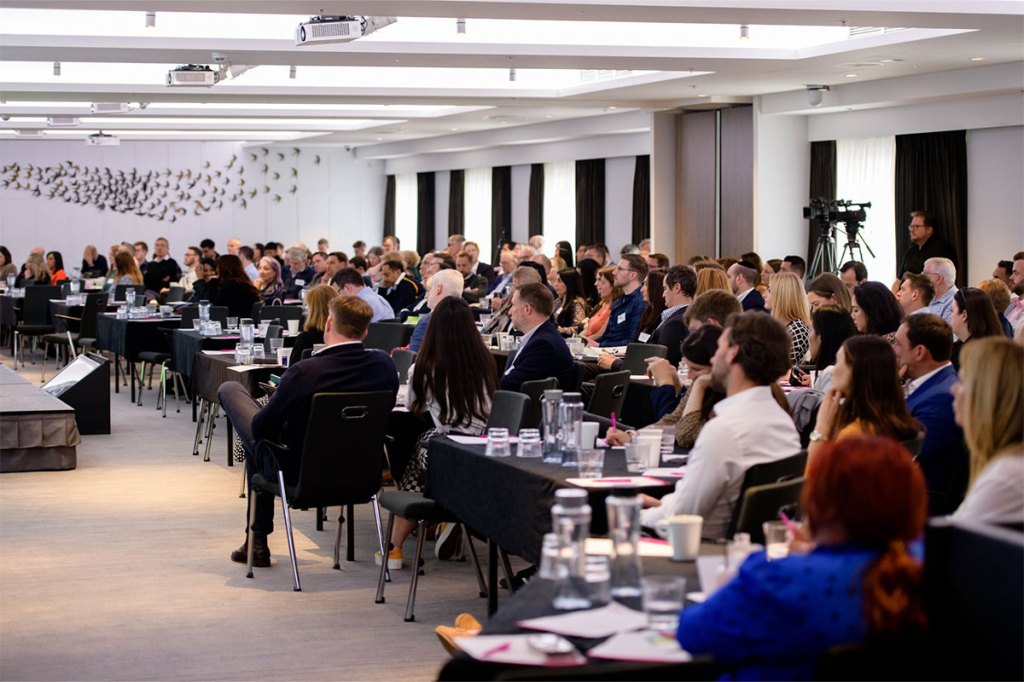
Rosenblatt expanded on this point and highlighted that all businesses make the mistake of investing in new tech systems before considering the person who is going to use them. He argued that if the community manager, who is “fundamentally going to be the person that uses this new system,” cannot use it, then flex companies will be “wasting hundreds of thousands of pounds.” Therefore, considering your process and providing comprehensive training to your people first – before investing in new technology – is the key to achieving organisational objectives.
By ensuring that “community managers can effectively utilise technology platforms and systems,” Rosenblatt states, businesses will be able to enhance the overall success of their system strategy – “But if that’s never going to happen, then companies will waste a lot of money on it.”
Getting the Basics Right: Importance of Comprehensive Systems Strategy
In a fast-paced business landscape, Boultwood notes “business timing is key.” So, with that in mind, he asked the panel, “When is the moment to think about implementation?” – Ellis-Moore responded by stating “Today.” She went on to emphasise that businesses “need to be thinking about their strategy.” They need to start considering and looking at their “payment systems, customer relationship management (CRM) tools, marketing platforms and call tracking systems,” if they wish to identify gaps in their processes and improve decision-making when choosing solutions for their coworking and flexible workspaces.
By gaining these insights, “businesses can align their roadmap with technology and make informed decisions” regarding products and solutions. Consequently, creating a frictionless and seamless experience, which Ellis-Moore highlights “is everyone’s goal.” Additionally, she notes that having a well-defined systems strategy will not only “set clear performance goals” but will help to “increase ROI across all areas of the business” within coworking and flex spaces.
However, it’s important to recognise that building a comprehensive system doesn’t happen overnight. Rosenblatt’s advice to the audience was “to start with simple steps and focus on getting the fundamentals right before scaling up.” He stresses, “As the number of sites and operations grow, the challenges will become more complex,” and so finding the right balance between systems will become critical.
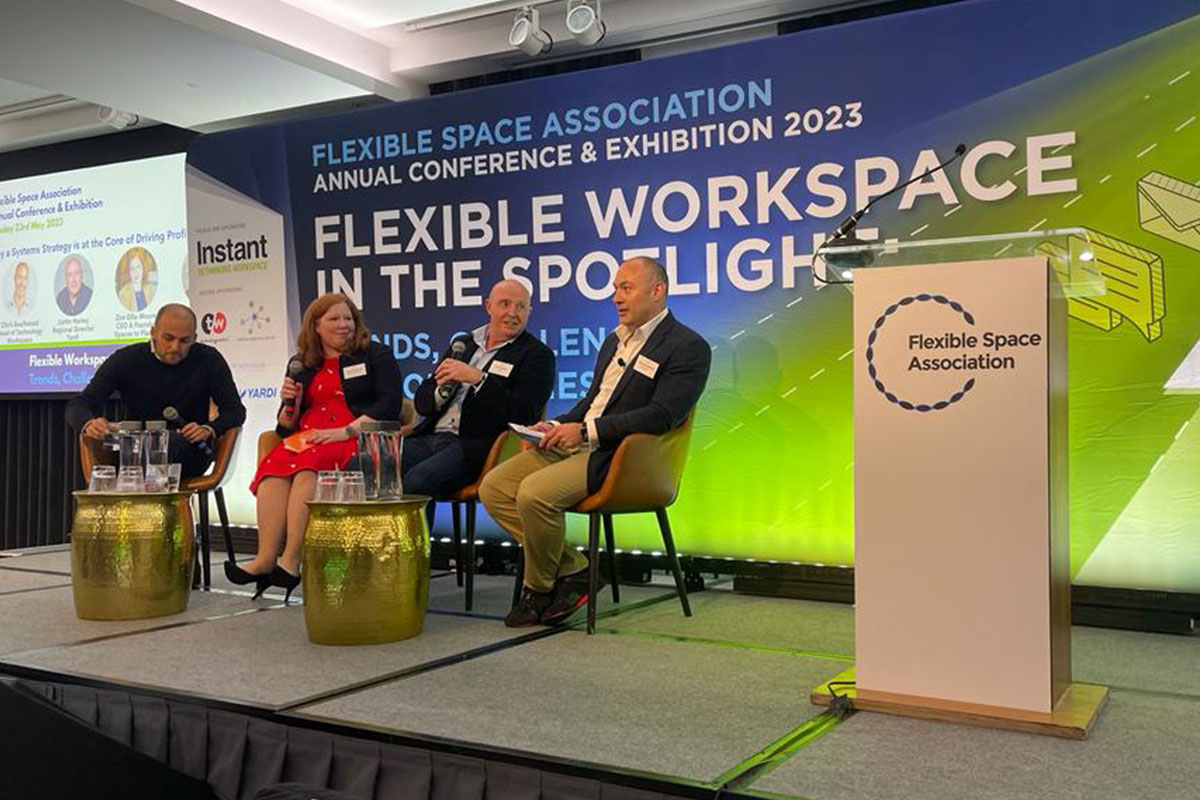
Is Coworking Behind?
Finally, in response to Boultwood’s penultimate question, Harley emphasised while the flex industry may offer a high level of service, it is lagging in terms of technology and automation when compared to other sectors. Harley points out that built to rent, for example, showcases “highly automated processes, from lease signing to customer ID verification.” This level of automation not only improves operational efficiency but also enhances the overall customer experience.
One notable area where the flex industry can learn from BTR (build to rent) sector is “the utilisation of chatbots and AI,” suggests Harley. He quotes that a lot of Yardi’s clients have discovered that “49% of their enquiries occur outside of regular business hours.” By leveraging AI-powered chatbots, BTR providers are effectively engaging with prospects during non-business hours and are also increasing operational efficiencies as, “AI can talk to a lot of different databases at the same time, which humans can’t do.” Therefore, such technological advancements offer valuable insights for coworking and flex providers and will help to enhance their systems and processes, Harley states.
Moreover, Ellis-Moore also suggests that the flex industry can draw inspiration not only from real estate businesses but also from other sectors such as hotels. She highlighted that the success of “Premier Inn, for instance, lies in its efficient tech systems and processes that consistently deliver value and meet customer expectations.” Learning from their experience, the flex industry can ensure communication channels are “managed more efficiently and effectively” and provide a seamless, satisfactory service experience.
Therefore, to drive the flex industry forward, it is essential to explore technological advancements and best practises from other sectors. By implementing a systems strategy that integrates automation, AI and efficient processes, the flex industry can enhance profitability and services, as well as position itself as a leader in the market.
Follow Yardi Kube on LinkedIn for the latest news, customer stories and blog posts.


